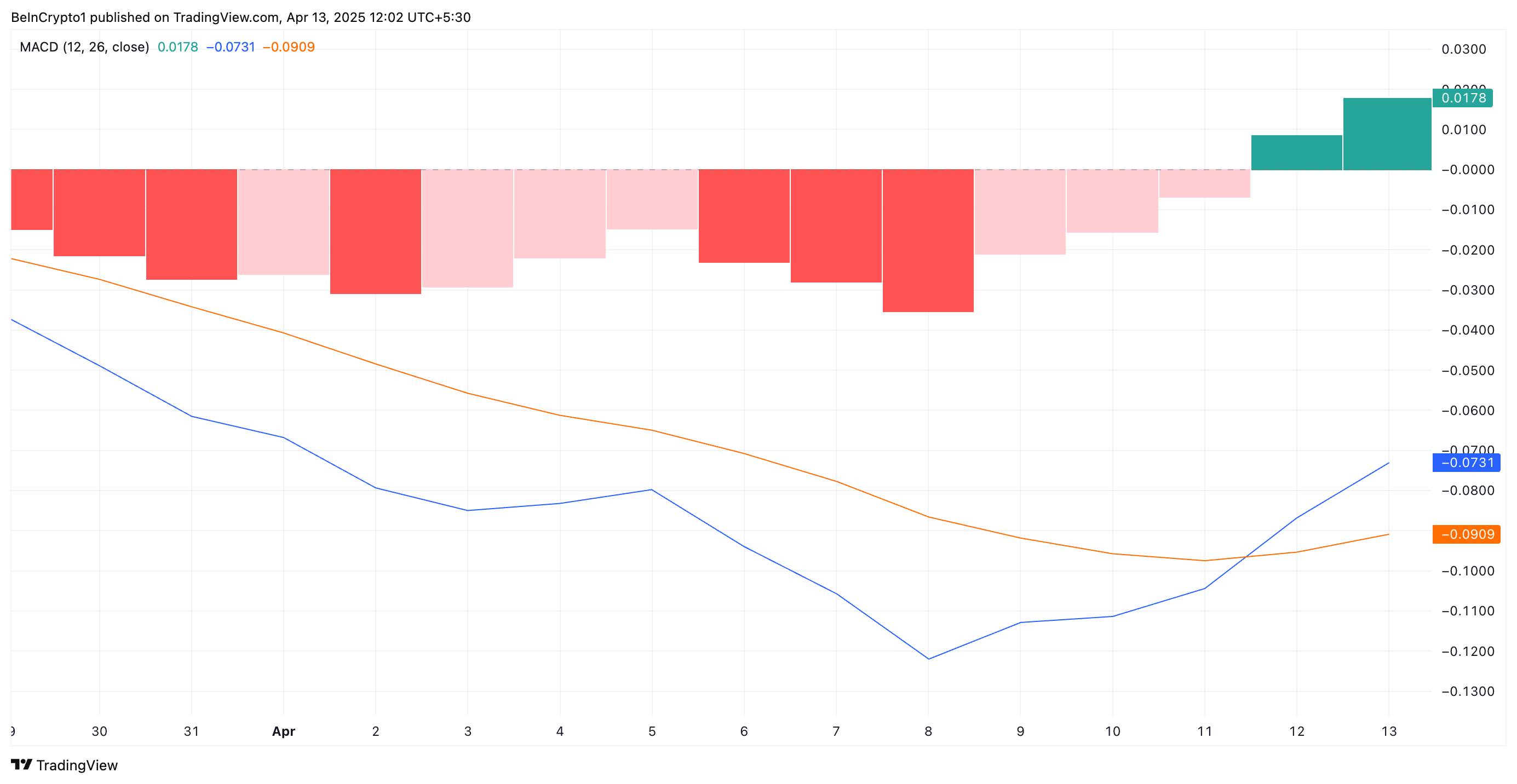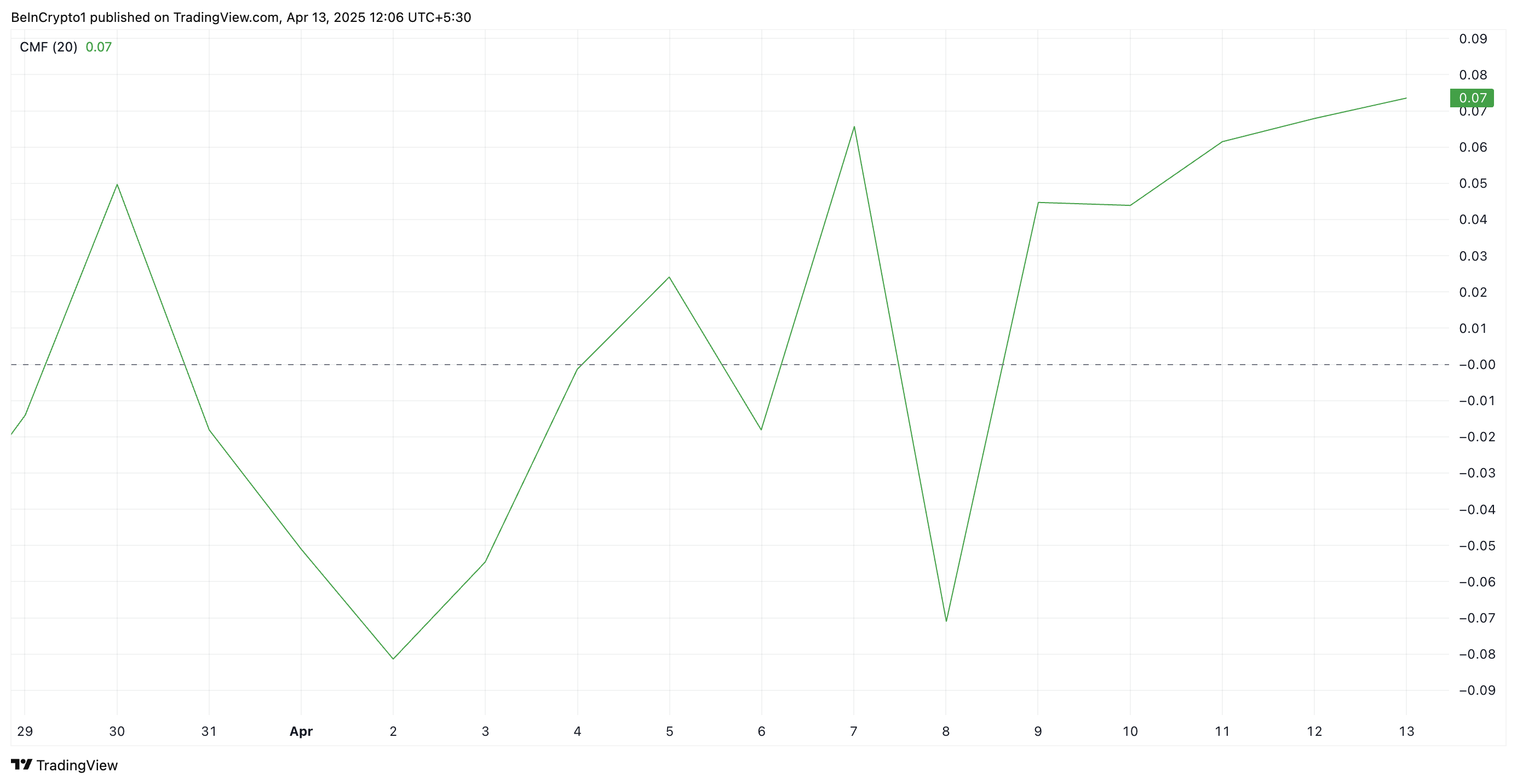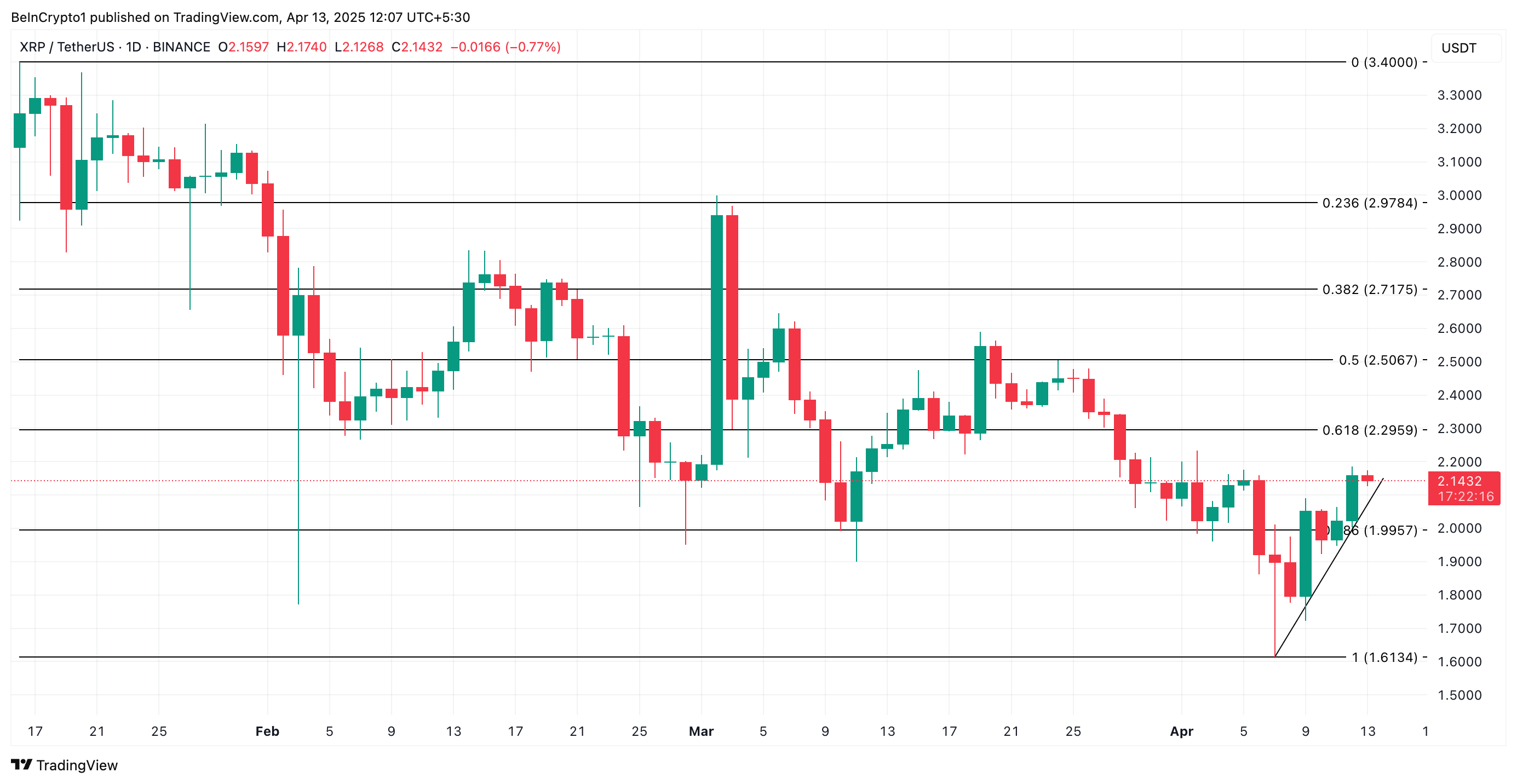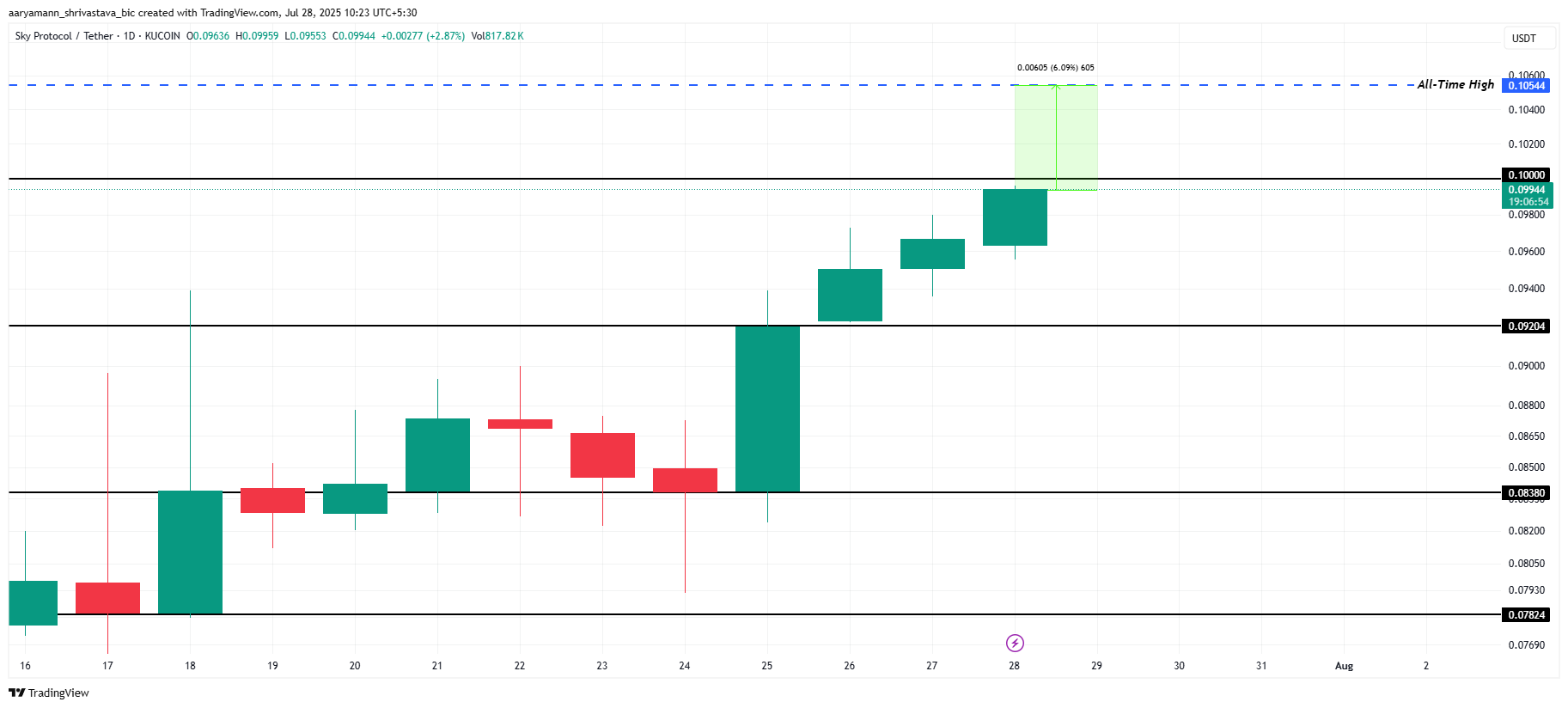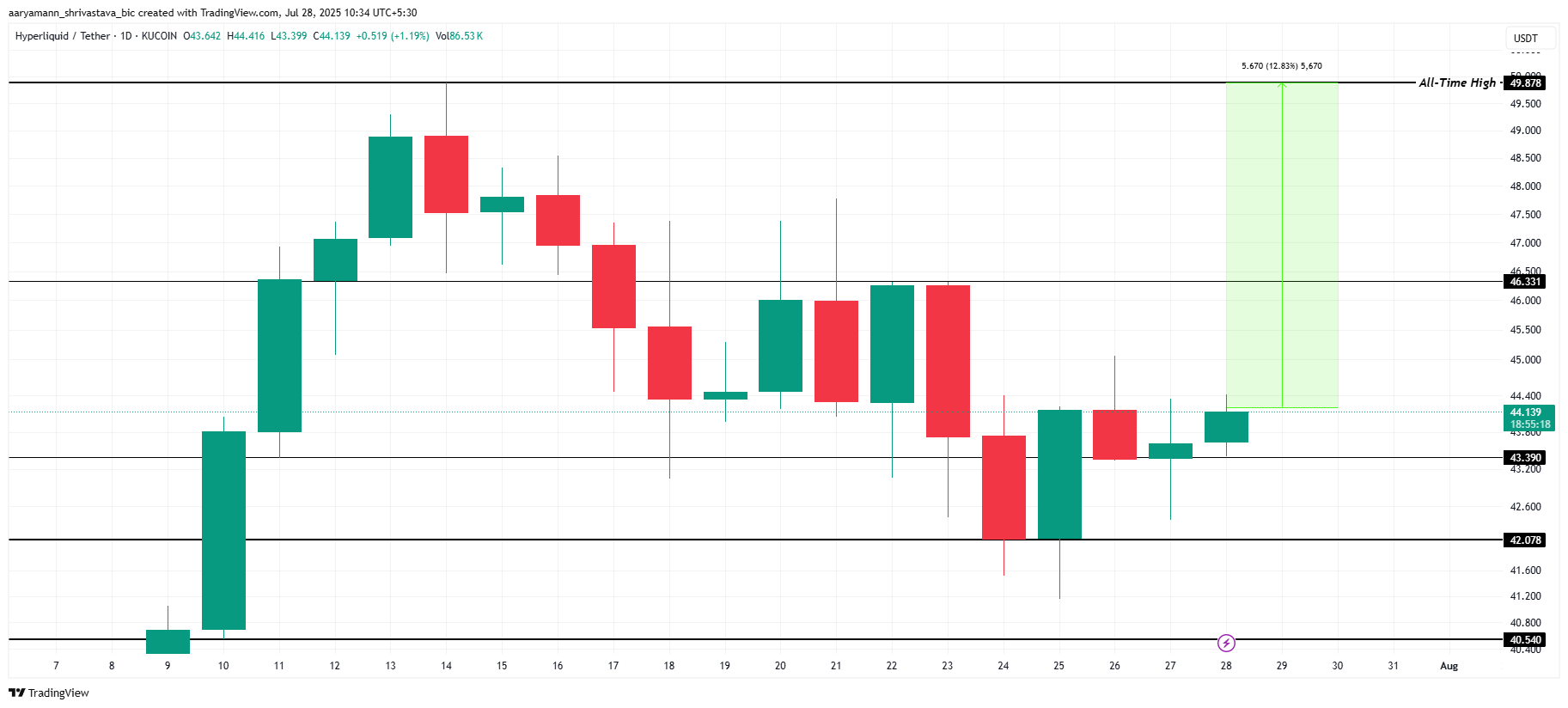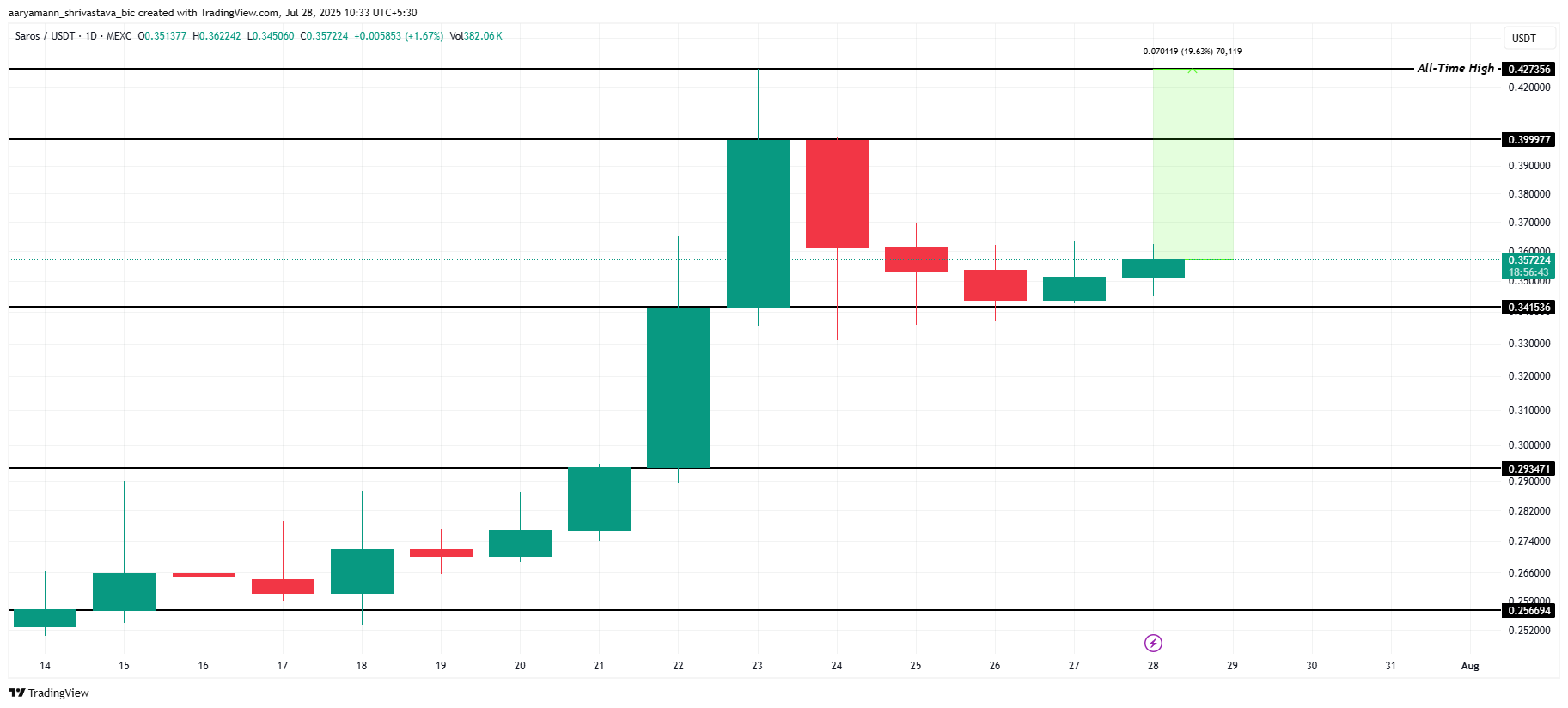A recent report from Reown reveals that the on-chain ecosystem is maturing, with users expanding their engagement beyond trading activities. Many believe that payments and artificial intelligence (AI) will be crucial in driving the wider adoption of on-chain technology.
Despite optimism about crypto’s future, challenges such as fees, security, and interoperability persist.
The Future of Crypto Adoption
Reown shared its report, “The State of Onchain UX,” with BeInCrypto. It draws from a survey of 1,038 active crypto users in the US and UK, conducted between February 19 and February 26, 2025.
The findings show that 37% of users believe payments, including stablecoins and remittances, will drive mass adoption. The report also notes a rise in stablecoin usage, from 20% last year to 37% this year.
Crypto wallet usage has also gained traction. Reown observed that in 2024, the average number of wallets in all regions rose by 1.27x.
Furthermore, 54% of users now transact with crypto for payments, suggesting growing real-world use.
“For crypto payments to truly reach the mainstream, they must match the ease of traditional fintech experiences. Users should be able to transact effortlessly without needing to understand blockchain mechanics,” Reown’s Payments Product Manager Mirna Barca wrote.
AI is seen as another key driver, with 35% of users identifying it as a major catalyst for adoption. Nonetheless, while AI’s potential is acknowledged, there is some skepticism about blockchain’s role in AI development.
Only 29% believe the two technologies will complement each other. Meanwhile, just 18% see crypto as facilitating AI’s progress.
“Despite trading taking the crown when it comes to user activity today, payments and AI dominate as the two themes users feel will play bigger roles on a greater scale, suggesting that the leading services users access today does not reflect what they believe to drive its long-term value,” the report read.
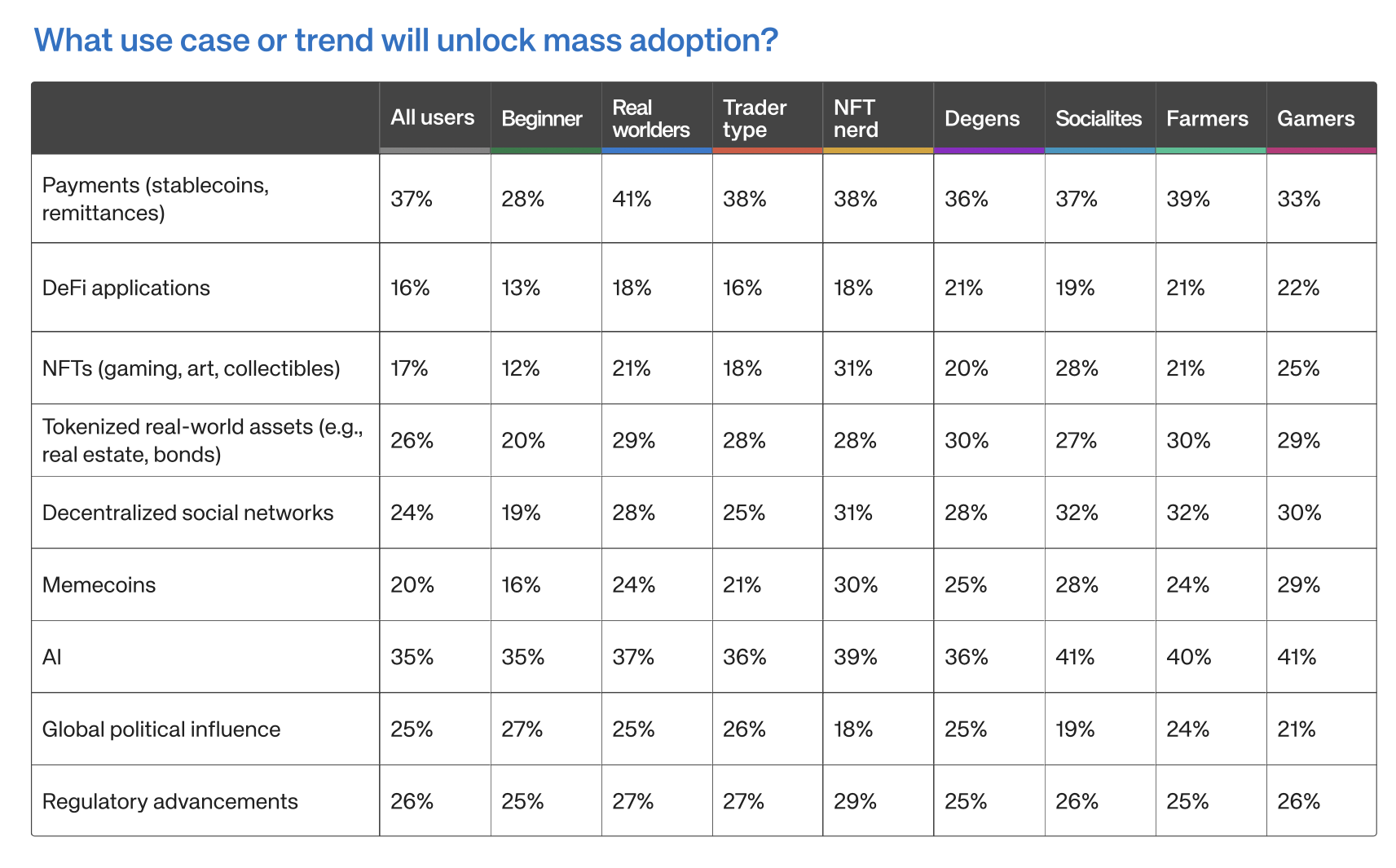
In addition, regulatory advancements and tokenization are seen as the next areas that could contribute to mass adoption, with 26% of users identifying each as a key factor. Under President Donald Trump’s administration, crypto regulation has taken center stage.
Shortly after President Trump took office, the SEC established a crypto task force to create a clear regulatory framework for digital assets. In fact, new SEC chairman Paul Atkins has also stressed the importance of crypto regulation, calling it a ‘top priority.’
This focus has contributed significantly to industry optimism, and user data exemplifies that. 86% of users believe it will drive mainstream adoption, while 14% think it will slow innovation.
“We’re in the final throes of regulatory uncertainty in the US. In Europe, MiCA is finally taking shape, but a lack of precedent has kept innovators guessing, just like in the US. The industry is on the cusp of regulatory clarity but we aren’t quite there yet,” Marco Santori, Director of WalletConnect Foundation, remarked.
What Are the Top Factors Holding Back Widespread Crypto Adoption?
Yet, before mainstream adoption can occur, users believe several areas need improvement. Better security leads the charge, with 33% of users considering it critical for wider adoption. Moreover, 25% of users highlighted privacy and data protection standards.
Confidence in on-chain security has risen significantly, with 69% of users feeling safe, up from 50.5% last year. However, so have phishing attacks. The number of phishing attacks reported by users has grown to 21%, up from 14.4%.
“Phishing attacks are up, and that’s a problem. But security UX still isn’t where it needs to be. If we can make transaction signing clearer and build in fraud protection, we can help users feel more in control,” Reown’s CEO Jess Houlgrave commented.
A notable 44% of users now use multiple wallets for security reasons, up from 32.8% in 2024. In addition, 18% of users cite security concerns, such as hacks and scams, as a barrier to engaging on-chain.
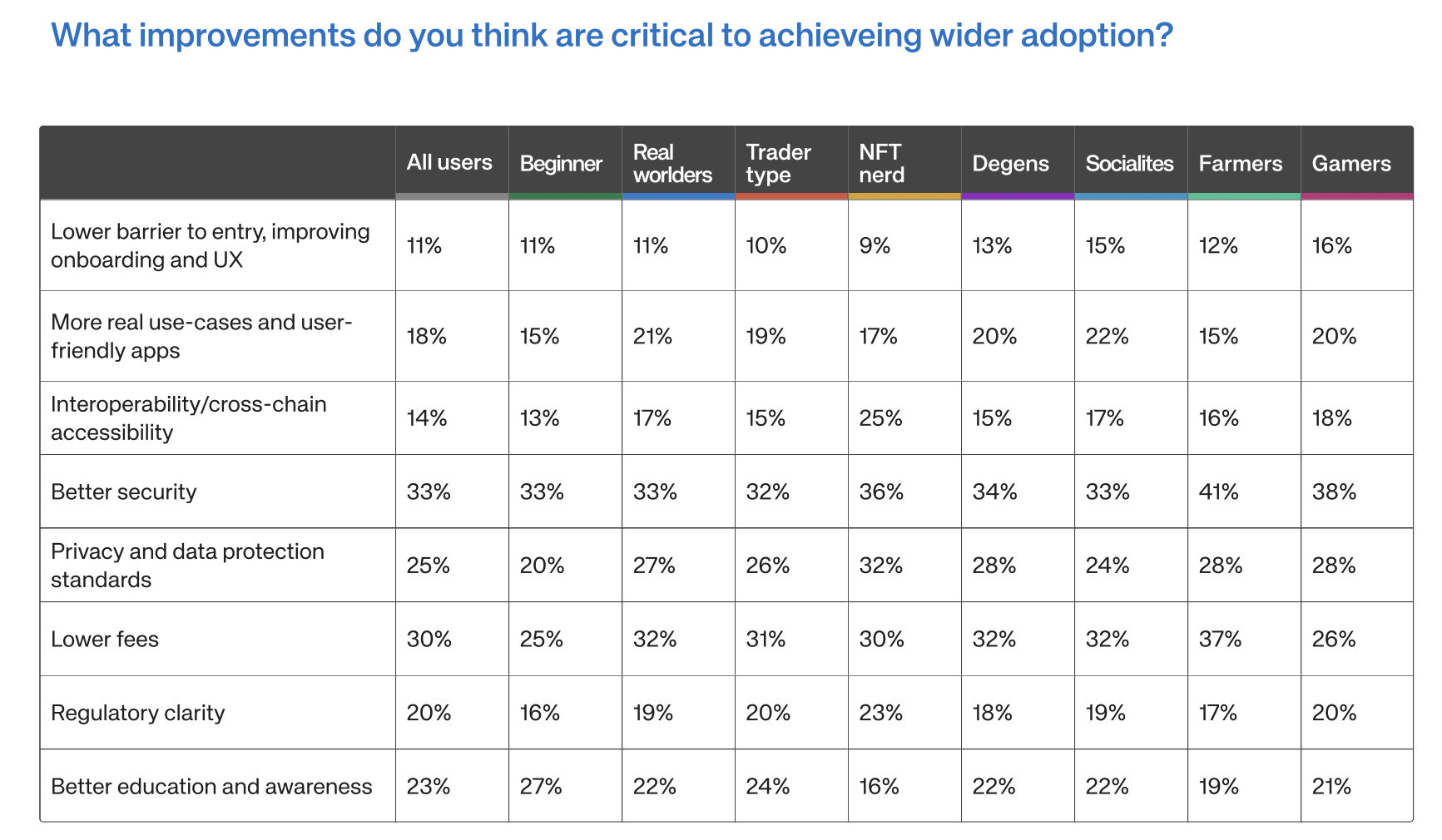
Along with security concerns, high fees deter 39% of the users from deeper engagement on-chain. Meanwhile, 30% believed lower fees would encourage greater participation.
Notably, users also emphasized the need for interoperability, with 47% considering it very important. Additionally, 18% cited a lack of interoperability as a barrier. Despite this, only 14% listed it as one of the core issues that need to be resolved.
Therefore, the report draws attention to the need for developers to focus on real-world use cases, ensuring seamless, secure, and cost-effective user experiences. It also highlights a disconnect between user expectations, centered on payments and social apps, and current behavior, which remains heavily trading-focused.
“Understanding and addressing this dynamic will be critical to achieving true mainstream adoption,” the report noted.
With 67% of survey participants optimistic about crypto’s development, the on-chain ecosystem is poised for growth. However, addressing security, fees, and interoperability will be essential to unlocking its full potential and driving the next wave of mainstream engagement.
The post Payments and AI: Key Drivers for the Next Wave of Crypto Adoption, Report Finds appeared first on BeInCrypto.



